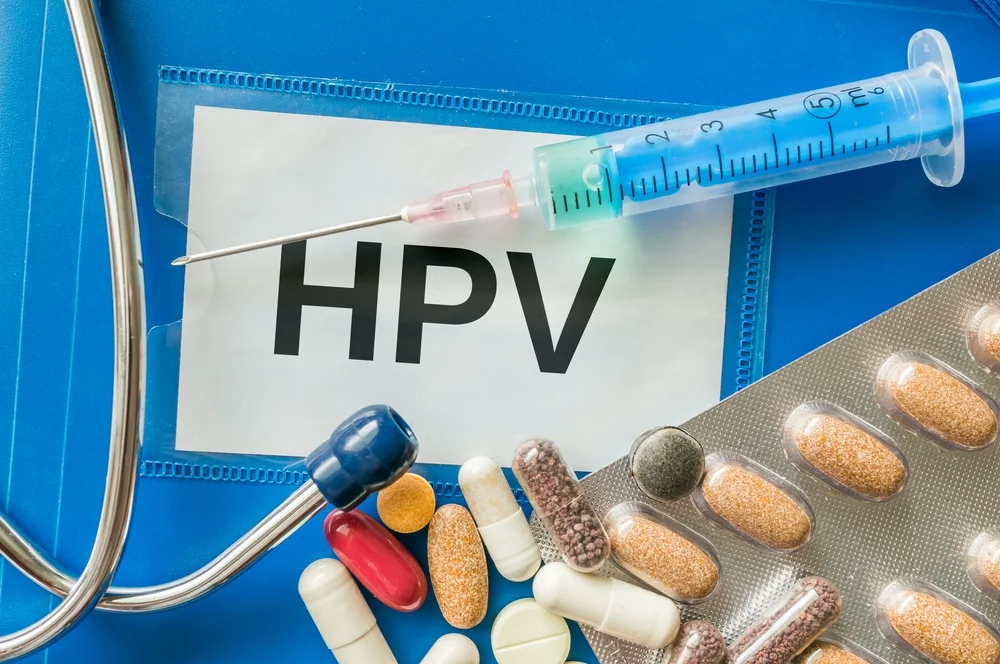Copyright newskarnataka

By Dr Alok Triapthi & Pallavi Bharti Pathak There are many sporadic reports of campaigns to vaccinate girls aged 9–14 years. This vaccination is against the human papillomavirus, which is said to cause cervical cancer in females. Recently, the Kerala government pushed for vaccination of girls in plus 1 and plus 2 grades i.e. 9–11 years old. While we, as the public, assume that if the government is adopting it, it means it is safe. However, the recently emerging side effects of the coronavirus vaccine, especially mRNA vaccines, have created sufficient apprehension in the public, which is not unjustified. Sufficient studies have already been published worldwide, clearly demonstrating the various side effects of the COVID-19 vaccine, and this is now a global phenomenon. Currently, India is witnessing several sudden deaths in young males due to cardiac arrests, without any previous complications. ICMR in 2023, claimed that alcohol, lifestyle stress and genetic history are responsible for it. However, it raises further questions because the parameters suggested haven’t changed recently. In 2025, AIIMS also conducting a study, whose initial findings indicated some ‘mutation’ as a cause of sudden death. Last week, the US Health Chief also criticized the mRNA vaccine and said it failed to serve its purpose. Even many, including ourselves have raised the question as to why the mRNA vaccine was chosen, because further control shall not be assured, once injected. Coming to the HPV vaccine, India also had a very painful experience in the past. In 2009, PATH conducted a vaccination program akin to a trial for the girls in Andhra Pradesh and Gujarat. Post-vaccination, 7 girls were dead, and 120 were hospitalized. These figures are from government health centres and do not include private facilities. However, this was not in public until 2013, when the case went to the Supreme Court. The government in court stated, “Can’t penalise US NGO for violating drug trial norms”. An ICMR–apex medical body of the country—constituted a committee which concluded in its report, “…committee has not been able to identify a single event, individual or agency which can be held entirely accountable for it”. So far, we don’t know the whereabouts of those girls. Status of cervical cancer in India The current campaigns against HPV were indeed initiated in 2024, when the interim budget speech had an unprecedented line: “Our Government will encourage vaccination for girls in age group of 9 to 14 years for the prevention of cervical cancer.” This one line got disproportionate space in the media. As per WHO 2020 data, India loses about 9.1 women per lakh each year to cervical cancer. This is a comparatively much higher number than neighbouring countries like Pakistan (5.7/l), Bangladesh (7.7/l). Such disparity among the same ethnicity with higher risks of predisposing factors can only be explained by the WHO’s incredible explanatory powers. Nothing else to see here. Considering WHO data as fact, it is important to understand the pros and cons of vaccination. With a vaccine claiming 70% efficacy and the virus detected in 92.7% of cases in 2010—a rise from 85.2% in 1990—we can potentially save only about 5.4 lives per lakh population by vaccinating all eligible girls. It’s hard to explain why the virus’s share of cancer cases is rising. Mutations can make the virus more infectious, but that doesn’t explain why a larger proportion of cancers are being linked to it. Could it just be a coincidence that both cancer cases and the virus’s role in cancer are increasing at the same time as cancer awareness and advertising? Yet, considering the audit data as fact, in that case, even only 5.4/1 lac lives can be saved. But then there will be 200 +/l with serious adverse effects close to death, including Anaphylaxis (severe allergy), Syncope (fainting with injury risk), Guillain-Barré syndrome (GBS), etc. This doesn’t include 3200 additional non-serious side effects. We also have no clear understanding of the potential future damage that may result from the trajectory of genetic material in the human body, as is becoming evident in the case of the spike protein in COVID-19 vaccines. However, by addressing the predisposing factors, we could save 7.4 lives per lakh population without any side effects, at roughly half the cost of vaccination, even according to the most conservative estimates. Researchers are also apprehensive about the mass vaccination, which, as per them, may lead to the emergence of a more virulent (infectious) strain. It’s important to talk about predisposing factors, which are often overlooked in current discussions. These factors matter most because they create the conditions that allow the virus to act. Without such a foundation, the pathogen alone would not be capable of infecting and causing cancer. Predisposing Factors in Virus-Related Cancers. These factors are crucial because they create the conditions that allow the virus to act; without such a foundation, the pathogen alone would not be sufficient to establish infection or trigger cancer. Key predisposing factors include: Exposure to harmful chemicals, Unhygienic genital conditions, Early onset of sexual activity, Chronic inflammation, Long-term use of oral contraceptives, Genetic susceptibility, and Immune suppression. Chemical Exposures (Pathways of Entry) Food and Beverages Polycyclic Aromatic Hydrocarbons (PAHs): Found in can linings, charred or smoked foods, and residues from industrial pollution contaminating crops. Phthalates & Bisphenol A (BPA): Leach from plastic containers, bottled water, beverage cans, and food linings—especially when heated. Consumer and Personal Care Products Cosmetics: Perfumes, deodorants, and fragranced body products often contain phthalates and other endocrine-disrupting chemicals. Vaginal Products: Lubricants, washes, and medicated gels may include harsh preservatives or artificial dyes. Menstrual Hygiene Products: Scented sanitary pads and tampons may contain fragrance chemicals, dyes, and preservatives; prolonged contact with mucosal tissues can enhance absorption. Environmental Contact Thermal Paper Receipts: ATM slips and shopping bills are often coated with BPA, which can be absorbed through the skin. Pesticides: Residues in fruits, vegetables, grains, and animal products. Industrial and Household Pollution: Airborne PAHs and chemical residues that settle on surfaces or dust, which can be inhaled or ingested. To explain predisposing factors, consider oral cancer in India linked to tobacco use. Tobacco does not directly cause cancer; rather, it creates a susceptible tissue environment—damaging DNA, inducing oxidative stress, and impairing local immunity—which allows other agents, such as HPV or additional insults, to initiate cellular transformation. A similar (though not identical) scenario exists in cervical cancer, where high-risk HPV infection alone is rarely sufficient to cause malignancy. Cancer develops only when HPV-induced changes occur within a susceptible tissue environment with additional cofactors. Thus, detection of HPV alone does not prove causation, highlighting the multifactorial nature of carcinogenesis. Conclusion: A Balanced Approach Considering cervical cancer’s multiple dimensions, mass vaccination appears less appealing as a solution. For individuals with strong genetic histories of cervical cancer, attenuated vaccines may be advisable. However, the most important step involves addressing predisposing factors, something each individual can begin implementing independently. Rather than relying solely on vaccination, it is imperative to understand that a comprehensive approach addressing environmental and lifestyle factors offers a safer, more cost-effective path to reducing cervical cancer incidence while avoiding potential vaccination risks. (Pallavi Bharti Pathak is an Investigative journalist. Background in biotechnology. After a stint in environmental impact assessment, I transitioned into journalism, where I reported on a diverse range of issues, with a particular focus on public health. @_pallavipathak) (Dr Alok Triapthi is PhD in Biotechnology & Immunology and author of 5 tertiary-level textbooks in Biochemistry and Environmental Science, and 15 research papers to his own credit. @HealthScholarIN) The authors are also associated with a health non-profit: Pharmon Foundation



